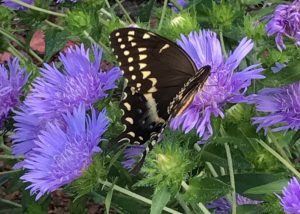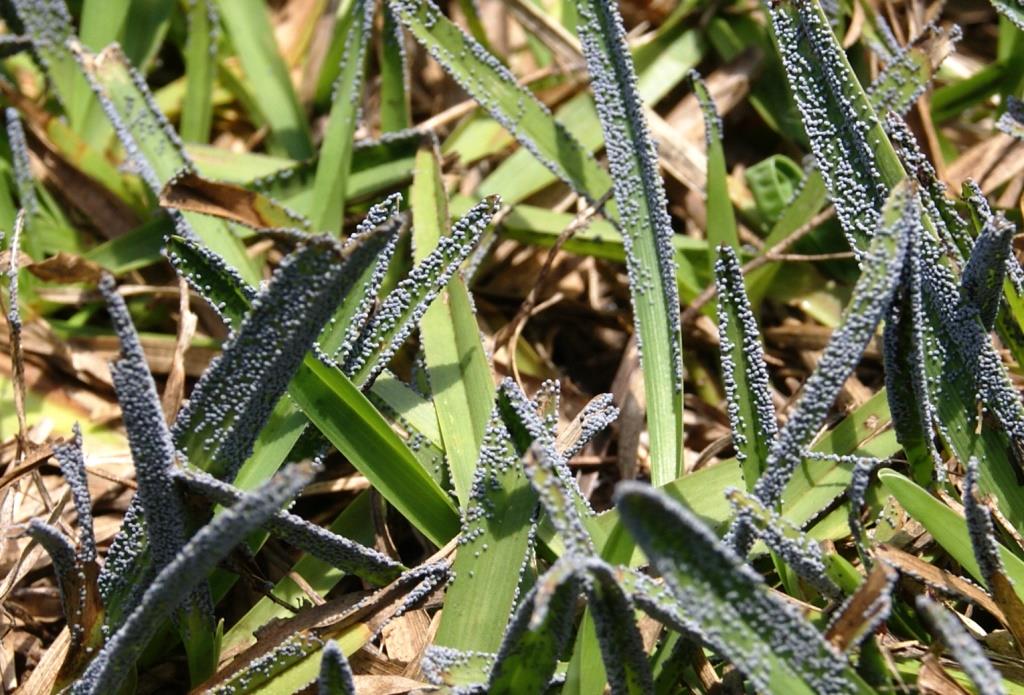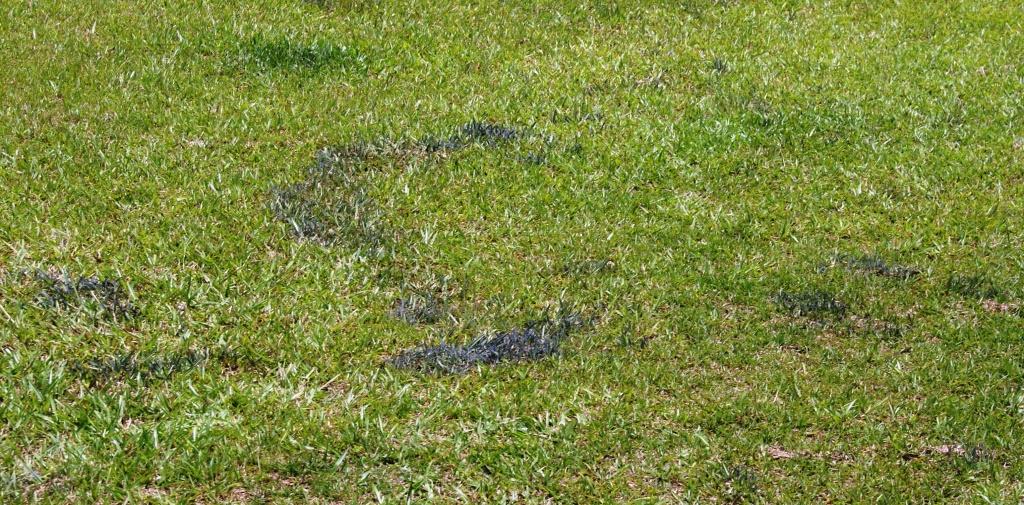
by Sheila Dunning | Jun 22, 2017

Wildflowers near Live Oak, Florida. Image Credit, UF / IFAS
Unfortunately, reports from the National Research Council say that the long-term population trends for some North American pollinators are “demonstrably downward”.
Ten years ago the U.S. Senate unanimously approved and designated “National Pollinator Week” to help raise awareness. National Pollinator Week (June 19-25, 2017) is a time to celebrate pollinators and spread the word about what you can do to protect them. Habitat loss for pollinators due to human activity poses an immediate and frequently irreversible threat. Other factors responsible for population decreases include: invasive plant species, broad-spectrum pesticide use, disease, and weather.
So what can you do?
- Install “houses” for birds, bats, and bees.
- Avoid toxic, synthetic pesticides and only apply bio-rational products when pollinators aren’t active.
- Provide and maintain small shallow containers of water for wildlife.
- Create a pollinator-friendly garden.
- Plant native plants that provide nectar for pollinating insects.
There’s a new app for the last two.
The Bee Smart® Pollinator Gardener is your comprehensive guide to selecting plants for pollinators based on the geographical and ecological attributes of your location (your eco-region) just by entering your zip code. Filter your plants by what pollinators you want to attract, light and soil requirements, bloom color, and plant type. This is an excellent plant reference to attract bees, butterflies, hummingbirds, beetles, bats, and other pollinators to the garden, farm, school and every landscape.
The University of Florida also provides a low-cost app for Florida-Friendly Plant Selection at: https://fyn.ifas.ufl.edu/plants or go on-line to create a list of these same plants at: http://www.deactivated_site/
Not only can you find out which plants attract pollinators, you will be given the correct growing conditions so you can choose ‘the right plant for the right place’.
Remember, one out of every three mouthfuls of food we eat is made possible by pollinators.

by Mark Tancig | Jun 22, 2017
Recent rains in the panhandle have kept many gardeners indoors. While we’re mostly watching the rain from inside, there are some lawn and landscape tasks to consider.
The most obvious is to turn off any automatic irrigation systems. Although rain shut-off devices are required for all automatic irrigation systems in Florida, many homeowners’ systems are not properly installed, are turned off, or are absent all together. Irrigating during times of adequate rainfall not only wastes a precious natural resource, but it can also be damaging to your turf and landscape plants by creating the perfect conditions for disease, especially fungi.

A rain shut-off device ensures that your irrigation system doesn’t come on during rainy weather. Photo by: Mark Tancig, UF/IFAS.
Something else to consider during all of this rain are potential mosquito breeding sites. Our most irritating mosquito species, those day-biting Asian tiger mosquitoes, love to breed in any small or large, water-holding containers around the house, including birdbaths, plant pot saucers, watering cans, five-gallon buckets, tarps, rain barrels, and the list goes on. The best method of control is to drain these containers every three to five days to prevent mosquito larvae from hatching. Another way to reduce larvae from hatching is to use a Bti product, which come in donut shaped dunks or as crumbles that can be sprinkled in the container. Bti controls mosquito, blackfly, and fungus gnat larvae, but does not harm beneficial insects and animals like birds, bees, butterflies, lizards, and frogs. If mosquitoes from the swamp or wetland behind your lot worry you, remember that those ecosystems have a diversity of insects that prey on mosquito larvae. Those containers in the yard do not have predators and can be a large source of the most aggravating mosquito species. For control of larger areas, including those natural ecosystems, contact your local mosquito control agency for assistance.

Bti bits are a way to prevent mosquito larvae from becoming biting adults. Photo by: Mark Tancig, UF/IFAS.
If you like to play in the rain a little, this is a good time to walk around and observe any runoff issues in the yard (make sure to do this only when it’s safe!). The ideal situation is to have runoff drain away from the house and percolate into landscaped areas. When surveying the yard in the rain, things to look for include areas of standing water (that could be a good location for a rain garden) and areas where erosion may be occurring (consider using berms or plantings to better direct and slow the water). Before doing any major drainage work, always check with your local building department. Some municipalities may require permits to ensure your improvements do not affect your neighbors or others downstream.

Rain gardens can turn a low, soggy spot into an aesthetic addition to your yard. Photo by: Courtney Schoen, TAPP.
If you have any questions about rain shut-off devices, mosquito control, or stormwater runoff, contact your local UF/IFAS Extension office for more information. Enjoy the rain; it will be sunny and hot before you know it!

by Mary Salinas | Jun 22, 2017

‘Mel’s Blue’ Stokes’ Aster. Photo credit: Mary Derrick, UF/IFAS Extension.
Florida is home to some of the most beautiful flowering perennials. An exceptional one for the panhandle landscape is Stokes’ aster (Stokesia laevis) as it is showy, deer resistant and easy to care for. Unlike other perennials, it generally is evergreen in our region so it provides interest all year.

Upright habit and profuse blooming of ‘Mel’s Blue’ Stokes’ Aster. Photo credit: Mary Derrick, UF/IFAS Extension.
The original species of Stokes’ aster has purplish-blue flowers but cultivars have been developed with flowers in shades of white, yellow, rosy-pink and a deep blue. The flowers are large, eye-catching beauties that bloom in spring and summer. They also last well as a cut flower. You will find that bees and butterflies will appreciate their nectar! Remove spent flowers after blooms have faded in order to encourage repeat flowering.
A location in your landscape that provides part sun with well-drained rich soil is best for this perennial. Stokes’ aster is native to moist sites so it does best with regular moisture.

Stokes’ aster attracts butterflies like this black swallowtail. Photo credit: Mary Derrick, UF/IFAS Extension.
As with many perennials, the plant will form a large clump after a few years; this gives you the opportunity to divide the clump in the fall and spread it out in your landscape or share the joy with your gardening buddies.
For more information:
Gardening with Perennials in Florida

by Matthew Orwat | Jun 16, 2017

Slime Mold Sporangia. Image Courtesy Matthew Orwat
Although black or white streaks are shocking when they appear on an otherwise healthy lawn, slime molds are rarely harmful.
Slime mold is actually caused by the reproductive structures of an array of different organisms, classified as plasmodia or Protista, which are regularly present in the soil. They are often mistaken for fungi. The different types are referred to as myxomycetes or dictyosteliomycetes. They usually appear on warm humid days in late spring or early summer after extended periods of rain. This extended period of heat and humidity, as is currently being experienced in the Florida Panhandle, initiates the perfect climate for slime mold development.
While regularly present in the soil, they usually make a visual appearance on warm humid days in late spring or early summer after extended periods of rain. This extended period of heat and humidity, currently being experienced in the Florida Panhandle, initiates the perfect climate for slime mold development.
As depicted in the picture, slime mold makes the lawn look like it was just spray-painted with black or grey paint. They can sometimes be pink, white, yellow or brown as well. The round fruiting bodies, called sporangia, carry the spores which will give rise to the next generation of the mold. After a few days the sporangia will shrivel up, release the spores and leave no noticeable trace on the lawn.

Closeup: Slime Mold in Centipedegrass. Image courtesy Matthew Orwat
Currently, no fungicide exists to control slime mold because chemical control is not necessary. An excellent method to speed up the dissipation of slime mold is to mow or rake the lawn lightly. This will disturb the spores and hasten their departure. Another effective removal method is to spray the lawn with a forceful stream of water. This process washes off the slime mold sporangia and restores the lawn to its former dark green beauty.
Excessive thatch accumulation also increases the probability of slime mold occurrence.
For more information consult your local county extension agent consult the UF / IFAS Slime Mold Fact Sheet, or read the Alabama Cooperative Extension publication Slime Mold on Home Lawns.

Slime Mold in Centipedegrass. Image Courtesy Matthew Orwat

by Les Harrison | Jun 15, 2017

Fertilizer spreader use is in full swing throughout the Florida panhandle
Fertilizing a lawn properly in the summer can enhance the landscape without inducing disease or harming the environment .
One universal activity is seasonal lawn and landscape maintenance. While some consider it a chore, many view it as a means to enhancing their personal environment.
The list of tasks are, for the most part, standard with few surprises. Raking leaves and pine straw, replacing shrubs which did not make it through the winter, and fertilizing the lawn and landscape.
While a routine undertaking, applying fertilizer requires thought and consideration to be effective without negative consequences. It should be a deliberate and well-planned accomplishment which is science based.
The proper selection of a fertilizer should be based on a soil test. Every UF/IFAS Extension Office has supplies for pulling and submitting a soil sample for evaluation.
The results, which can come via mail or e-mail, will tell the homeowner what nutritional deficiencies exist in their lawn and landscape. Based on the type of grass or shrubs, the report will deliver the information on the fertilizer analysis needed for optimum plant performance.
With this information in hand, the homeowner can visit a local retailer who can provide the product which meets the needs of the landscape without wasting excess nutrients. Excess soil nutrients can easily be relocated to bodies of water when storm water washes it downstream.
Homeowners have several types of fertilize from which to choose for use on their lawn. Each has distinct advantages and disadvantages.
Dry blend fertilizer is usually the least expensive and is easy to find in the market place. It is a mixture of minerals and compounds which are combined to produce a particular analysis, such as 10-10-10.
This analysis is ten percent nitrogen, ten percent phosphorus, and ten percent potassium with the remaining 70 percent being micronutrients and inert carrier. Applied correctly, it can be effective at delivering the needed nutrients.
It is most effective when applied several times throughout the growing season. The grass and shrubs will then have a continuous supply of the needed nutrients over time.

Soil test kit available from your local Extension office. Photo: Mary Derrick, UF/IFAS.
One potential problem with dry blend fertilizer is the particle size of the different nutrients. If irregular, they can separate during transportation to the retailer.
This can be easily corrected by the homeowner. Just pour the contents of the bag into a container and mix using a can or shovel.
Dry slow-release fertilizers are gaining popularity, but they are more expensive. They have a sulfur or polymer coating on the particles which allows for the slow release of the nutrients.
A single application can last for up to six months which frees the homeowner to pursue other activities. The most common use of this product is with shrubs and potted plants.
Liquid fertilizer concentrates are available, but the convenience comes at a high cost. It is easily diluted for use, but uniform application over a large area can be challenging.
No matter which form is used, proper application will grow good results. A healthy and well maintained lawn and landscape leave more time for other springtime pursuits.
To learn more about the fertilizer for your landscape, contact your county agent and refer to this section on our website devoted to lawn fertilization.

















